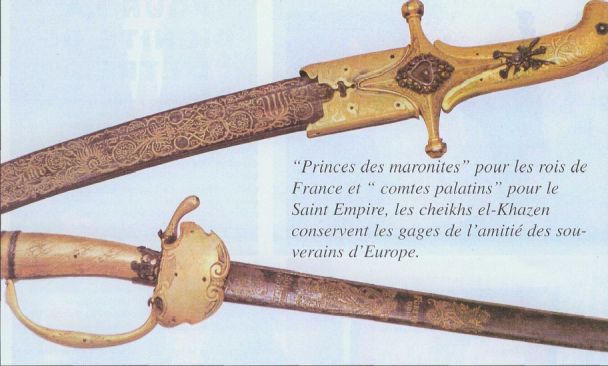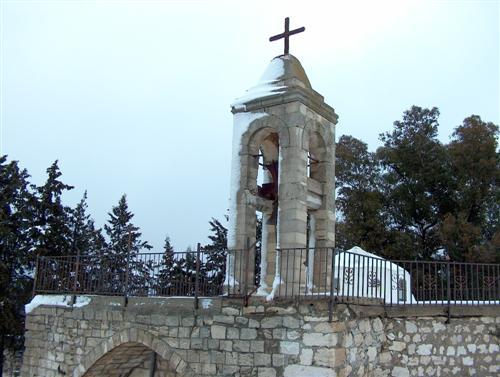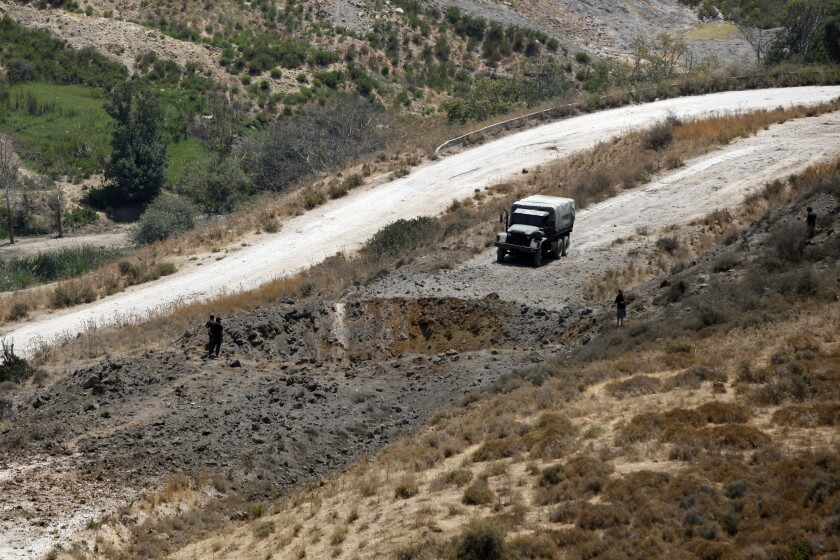
by thearabweekly.com -- BEIRUT - The artist meticulously cuts small pieces of yellow and red glass, then lays them in a pattern to recreate the stained-glass windows that were the trademark of Beirut’s Sursock Museum, shattered in last year’s port explosion. Conservators, hunched over with magnifying glasses, fill lines of paint loss caused by the explosion with their brushes and weave together tears thread by thread under microscope. Other workers delicately piece back together broken shards of ceramics. “It has been very hard to see my work of 30 years on the ground, back to being sand … But it is important to rebuild the museum,” said Maya Hussaini, the artist who worked on the stained-glass windows during a major renovation at the museum that finished in 2015 and is back rebuilding them now, “I had to go back to my archive to dig out my designs to bring it back to how it was,” she said.
Perched on the hills of the Achrafieh neighbourhood hundreds of metres from the Beirut Port, the 60-year-old Sursock was the beating heart of Beirut’s creative scene. The country’s only modern art museum, it boasts a collection of Lebanese art dating back to the late 1800s. It has long provided a rare public and free space for art, not even closing throughout Lebanon’s 1975-1990 civil war. Restorers and artists have been working to revive that role after the museum was decimated by the Aug. 4, 2020 port explosion.
The explosion ripped through the three-story building, unhinging the doors, wrecking everything down to the fourth underground level. Windows shattered, including the stained-glass windows of its façade. The art collection was badly hit. At least 57 of the 130 pieces on display were either broken or torn, including Dutch artist Kees Von Dongen’s portrait of Nicolas Sursock, after whom the museum is named. The nearby 19th-century landmark Sursock Palace, one of the most storied buildings in the Lebanese capital, was also wrecked in the blast.
by asumetech.com — Supporters of the Lebanese Hezbollah militia launched an incitement campaign against young Yahya Timani on Friday, who filmed the …
ولو انني اكرر نفسي اتمنى على فخامة الرئيس ان يدعو المجلس الاعلى للدفاع للاجتماع الان لبحث موضوع الاعتداء الاسرائيلي على لبنان في …
BY LAURIE KELLMAN AND ZEINA KARAM ASSOCIATED BEIRUT — The militant group Hezbollah fired a barrage of rockets toward Israel on Friday, and Israel hit back with artillery in a significant escalation between the two sides. It was the third day of attacks along the volatile border with Lebanon, a perennial focus of Middle East conflict where tensions between Israel and Iran, which backs Hezbollah, occasionally play out. But comments by Israeli officials and Hezbollah’s actions suggested the two were seeking to avoid a major conflict at this time. Israel said it fired back after 19 rockets were launched from Lebanon, and Prime Minister Naftali Bennett swiftly convened a meeting with the country’s top defense officials. No casualties were reported. “We do not wish to escalate to a full war, yet of course we are very prepared for that,” said Lt. Col. Amnon Shefler, spokesman for the Israel Defense Forces.
The attack sparked tensions between local residents and Hezbollah. Videos circulated on social media after the rocket attack showed two vehicles, including a mobile rocket launcher, being stopped by villagers in the southeastern village of Shwaya in Hasbaya region, near the border with the Golan Heights. The windshield of one vehicle was smashed. Some of the villagers could be heard saying: “Hezbollah is firing rockets from between homes so that Israel hits us back.” The Lebanese army said it arrested four people who were involved in the rocket firing and confiscated the rocket launcher. It said Lebanese troops and U.N. peacekeepers are taking all measures to restore calm. Hezbollah issued a statement saying that the rockets were fired from remote areas, adding that the fighters were stopped in Shwaya on their way back. “We lived a similar period in the 1970s, when Palestinian fighters were carrying out guerrilla attacks against Israel. We are now to the same status, and this is causing tension,” said Ajaj Mousa, a resident of nearby Kfarchouba.
Khazen History


Historical Feature:
Churches and Monasteries of the Khazen family

St. Anthony of Padua Church in Ballouneh
Mar Abda Church in Bakaatit Kanaan
Saint Michael Church in Bkaatouta
Saint Therese Church in Qolayaat
Saint Simeon Stylites (مار سمعان العامودي) Church In Ajaltoun
Virgin Mary Church (سيدة المعونات) in Sheilé
Assumption of Mary Church in Ballouneh
1 - The sword of the Maronite Prince
2 - LES KHAZEN CONSULS DE FRANCE
3 - LES MARONITES & LES KHAZEN
4 - LES MAAN & LES KHAZEN
5 - ORIGINE DE LA FAMILLE
Population Movements to Keserwan - The Khazens and The Maans
ما جاء عن الثورة في المقاطعة الكسروانية
ثورة أهالي كسروان على المشايخ الخوازنة وأسبابها
Origins of the "Prince of Maronite" Title
Growing diversity: the Khazin sheiks and the clergy in the first decades of the 18th century
Historical Members:
Barbar Beik El Khazen [English]
Patriach Toubia Kaiss El Khazen(Biography & Life Part1 Part2) (Arabic)
Patriach Youssef Dargham El Khazen (Cont'd)
Cheikh Bishara Jafal El Khazen
Patriarch Youssef Raji El Khazen
The Martyrs Cheikh Philippe & Cheikh Farid El Khazen
Cheikh Nawfal El Khazen (Consul De France)
Cheikh Hossun El Khazen (Consul De France)
Cheikh Abou-Nawfal El Khazen (Consul De France)
Cheikh Francis Abee Nader & his son Yousef
Cheikh Abou-Kanso El Khazen (Consul De France)
Cheikh Abou Nader El Khazen
Cheikh Chafic El Khazen
Cheikh Keserwan El Khazen
Cheikh Serhal El Khazen [English]
Cheikh Rafiq El Khazen [English]
Cheikh Hanna El Khazen
Cheikha Arzi El Khazen
Marie El Khazen
